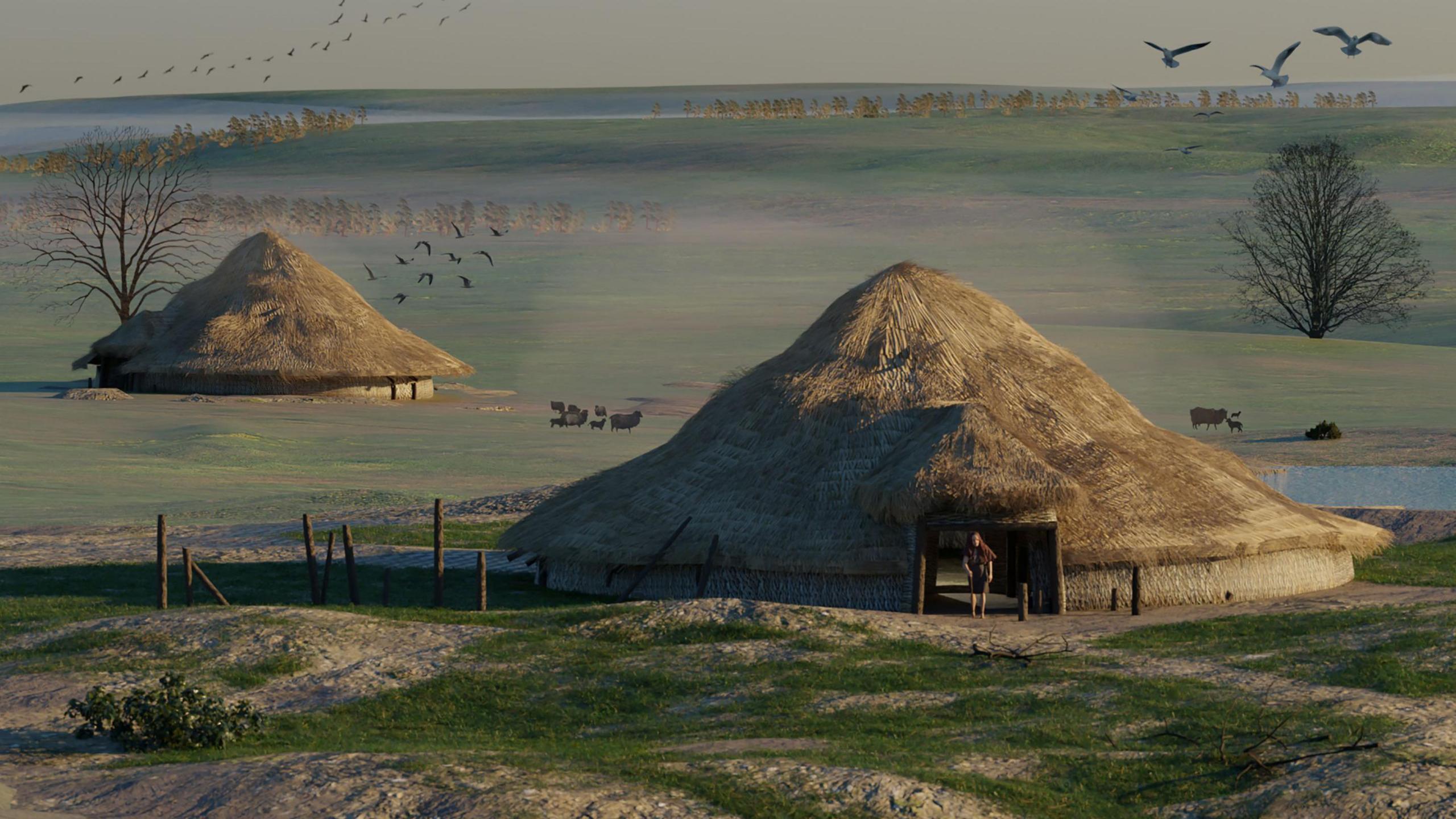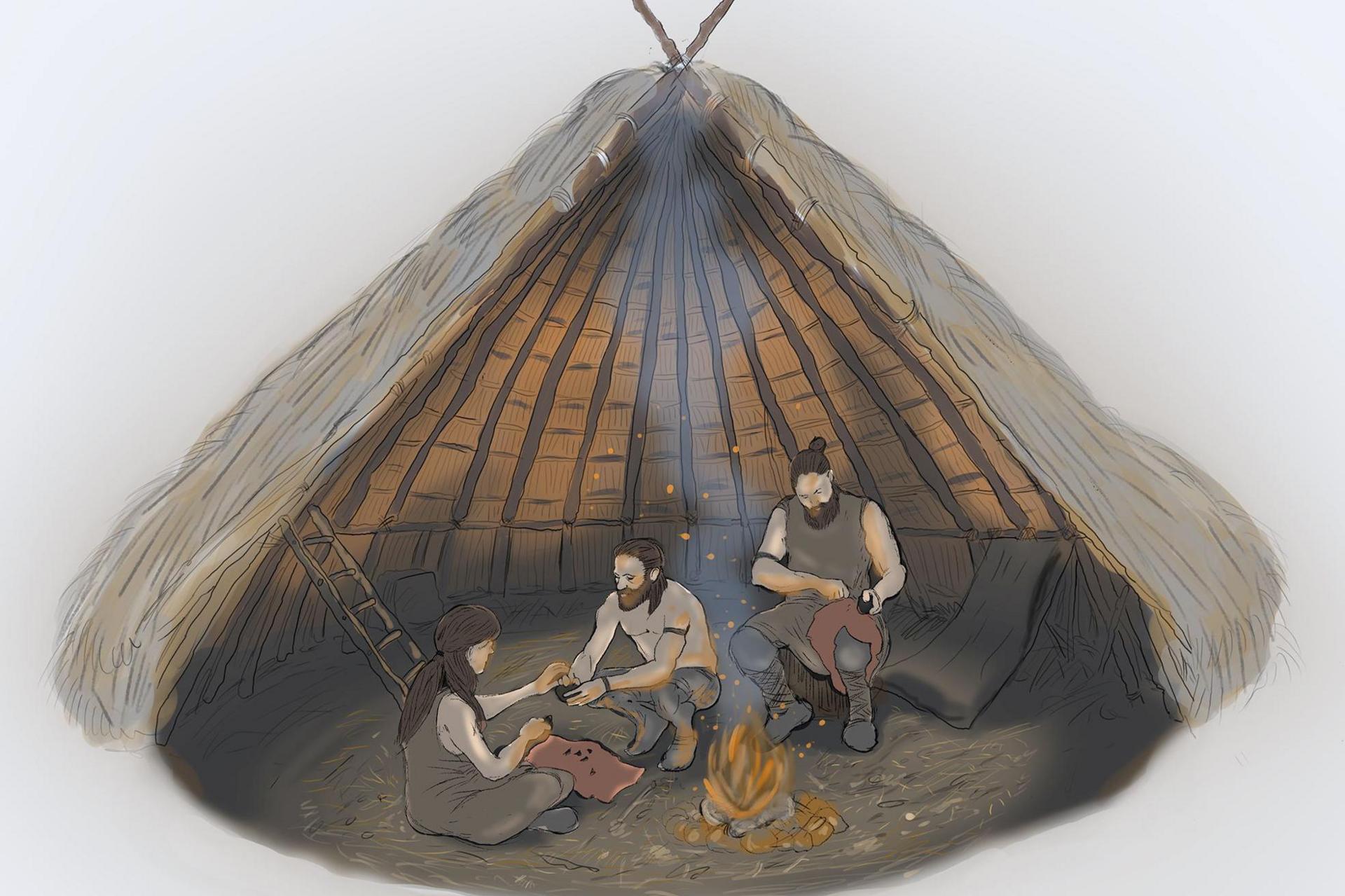'Whole prehistory of Fife' found in one field, experts say

Reconstruction of the Bronze Age houses at Guardbridge
- Published
Archaeologists say they have found evidence that a site in a village near St Andrews has been used by people for about 10,000 years.
Traces of an ancient hunter gatherers' campsite and remains of grains harvested by some of Fife's first farmers were among items discovered on the land in Guardbridge.
Archaeologists carried out excavations between 2017 and 2021 ahead of the construction of new homes. Details on the finds have been published in Archaeology Reports Online, external and a new booklet.
Maureen Kilpatrick, who directed the excavations by Guard Archaeology, said: "We really didn't expect to find the whole prehistory of Fife in one field."
The discoveries included tools used for weaving woollen cloth and moulds for making a sword blade that dated to the Bronze Age, which ended about 2,800 years ago.
The site was also used before this by early Neolithic farmers, who left pits containing burnt cereal grains.

A reconstruction of the Mesolithic hunter gatherer encampment at Guardbridge
Traces of a temporary Mesolithic campsite were also uncovered.
The Mesolithic period, also known as the Middle Stone Age, began about 12,800 years ago and ended about 6,100 years ago.
Jordan Barbour, who co-authored the new report, said: "We found evidence a fire pit radiocarbon dated to around 4320-4051 BC.
"This fire pit was associated with a cluster of burnt lithics (artifacts) arranged in a distinctive star-shaped pattern, indicative of a tent or shelter, where a small group of hunter gatherers once camped to hunt and fish in the nearby estuary."
The very earliest evidence of human life on the site were flints - stone tools - from 10,000 BC during the Late Upper Palaeolithic period.
The excavation was commissioned by housebuilder Persimmon Homes North.
There are other places across Scotland that have been used again and again by people over long periods of time, including a site in the Highlands where Iron Age and Neolithic finds were made.